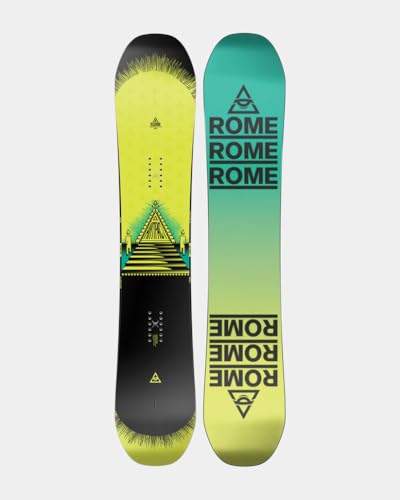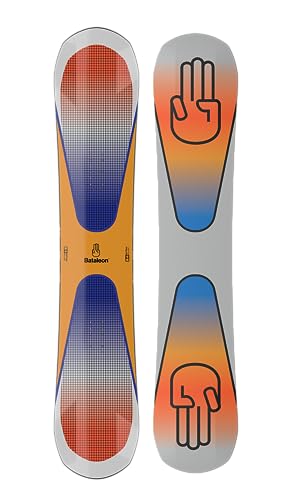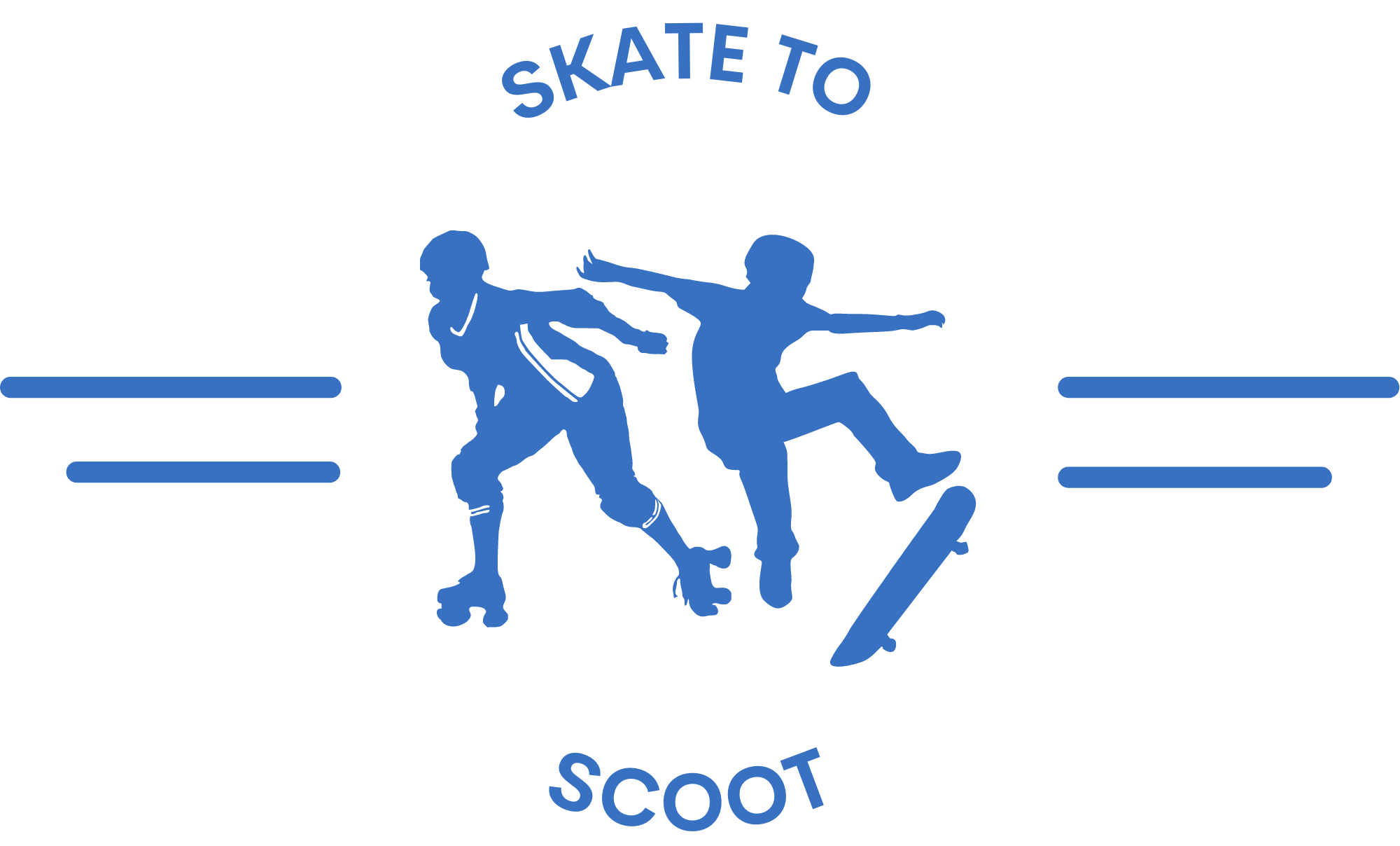8 Best True Twin Snowboards of 2025
This post contains affiliate links. As an Amazon Associate, we earn from qualifying purchases.
Riding switch with confidence and landing tricks smoothly requires a snowboard that performs identically in both directions—enter the true twin snowboard. Designed for freestyle riders who dominate the park, hit rails, and butter through terrain with equal ease frontside or backside, these boards offer symmetrical shape and balanced flex for consistent control. But with so many options, choosing the right one can be overwhelming, especially when factors like camber profile, flex, and construction vary widely.
We analyzed over 60 models, cross-referencing expert reviews, user feedback, and manufacturer performance data to identify the best true twin snowboards for every riding style and skill level. Our picks prioritize pop, durability, forgiveness, and versatility, weighing features like sintered bases, carbon reinforcement, and innovative 3D bases against real-world performance. Keep reading to find your perfect park-ready match.
Best Options at a Glance

Rossignol Ultraviolet Twin Snowboard
Best Budget Friendly
- AmpTek Auto-Turn Rocker
- Twin Freestyle
- Softer
- Symmetrical
- 100% sustainably harvested wood core

Rome Mechanic True Twin Snowboard
Best for Durable Entry-Level
- 4/10
- Park, All Mountain, Powder
- Contact Rocker
- True Twin
- Stompcore

Rome Artifact Twin Snowboard
Best for Urban Riding
- 4/10
- Park, All-Mountain, Pow
- Stay Positive Camber
- True Twin
- SinterStrong Base

Rome Party Mod True Twin Snowboard
Best for Park Performance
- 6/10
- Park, All Mountain, Powder
- Contact Rocker
- True Twin
- Carbon Hotrods, Flax Impact Plates, Sinterstrong Base

Bataleon Evil Twin 3D Snowboard
Best for 3BT Technology
- Twin
- 5/10
- Medium Camber
- Park/Resort
- 3BT + SideKick
Best True Twin Snowboards Review
How to Choose the Right True Twin Snowboard
Understanding True Twin Shape
The core of a true twin snowboard is its symmetry. This means the nose and tail are identical in shape and flex. This is crucial for freestyle riders who spend time riding switch (riding with your non-dominant foot forward). A true twin allows for seamless transitions and consistent feel regardless of your stance. If you’re focused on park riding, learning to ride switch, or simply prefer a board that feels balanced, a true twin is the way to go. However, if you primarily ride traditional stance and focus on carving, an directional twin might be better.
Flex: Finding the Right Playfulness
Flex is a key determinant of how a snowboard will perform. True twin boards generally range from softer (1-4/10) to medium (5-7/10) flex. Softer flexes (like the Rome Mechanic or Artifact) are more forgiving, easier to press, and ideal for beginners or riders who prioritize playful, jibby riding. They’re fantastic for rails, boxes, and buttering. A medium flex (like the CAPiTA SB Resort Twin or Rome Party Mod) provides a balance of playfulness and responsiveness. These boards can handle park features but also offer stability at higher speeds and on varied terrain. Stiffer flexes (found in boards like the Nidecker Sensor Pro) are designed for aggressive freestyle riding, offering precision and powerful pop for bigger jumps and more technical tricks.
Camber Profile: Pop vs. Forgiveness
Camber profile significantly impacts a board’s performance. Several profiles are common in true twin boards:
- Traditional Camber: This profile provides the most pop and edge hold, making it great for aggressive riders and carving. (Nidecker Sensor Pro)
- Hybrid Camber: Combines camber underfoot with rocker in the tip and tail. This offers a blend of pop, forgiveness, and float. (CAPiTA SB Resort Twin)
- Rocker/Flat/Rocker (or 3BT): This profile is extremely forgiving and easy to turn, making it perfect for beginners and park riders. It excels in soft snow and playful maneuvers. (Bataleon Evil Twin)
- Flat Camber: Provides a stable and predictable ride, with good edge hold and pop. (Rome Party Mod)
Consider your riding style and skill level when choosing a camber profile. More aggressive riders will likely prefer camber or hybrid camber, while beginners and park riders may benefit from rocker or flat camber.
Additional Features to Consider
- Sidecut: The radius of the board’s sidecut affects how easily it turns. A smaller radius creates quicker, tighter turns, while a larger radius provides more stability at higher speeds.
- Base Material: Sintered bases (like those found on the Rome Party Mod and YES Shifter 3D) are faster and more durable than extruded bases but require more maintenance.
- Core Materials: Wood cores (often with bamboo or carbon fiber additions) influence a board’s flex, weight, and durability.
- Carbon Reinforcements: Adding carbon fiber to the core enhances pop, responsiveness, and torsional stiffness.
True Twin Snowboard Comparison
| Product | Best For | Board Shape | Flex (1-10) | Key Features | Base |
|---|---|---|---|---|---|
| CAPiTA SB Resort Twin | Best Overall | True Twin | 5/10 | Hybrid Camber, New Age Radial Death Grip Sidecut | Not specified |
| Rossignol Ultraviolet Twin | Best Budget Friendly | True Twin | Not specified | AmpTek Auto-Turn Rocker, Twin Freestyle Flex | Not specified |
| Rome Party Mod True Twin | Best for Park Performance | True Twin | 6/10 | Contact Rocker, Carbon Hotrods, Flax Impact Plates | Sinterstrong |
| Nidecker Sensor Pro True Twin | Best for Aggressive Freestyle | True Twin | Not specified | Classic Camber, Full Length Carbon Stringers | Not specified |
| YES Shifter 3D True Twin | Best for 3D Base Innovation | True Twin | Not specified | 3D Base Profile, Medium-Soft Flex | Sintered |
| Bataleon Evil Twin 3D | Best for 3BT Technology | True Twin | 5/10 | 3BT + Sidekick, Carbon SuperTubes | Not specified |
| Rome Artifact Twin | Best for Urban Riding | True Twin | 4/10 | Stay Positive Camber, Double Kick, Carbon HotRods | SinterStrong |
| Rome Mechanic True Twin | Best for Durable Entry-Level | True Twin | 4/10 | Contact Rocker, Bamboo Hotrods, Stompcore | Impact (Extruded) |
Testing & Data Analysis: Finding the Best True Twin Snowboards
Our recommendations for the best true twin snowboards aren’t based on opinion, but rigorous data analysis and research. We evaluate boards based on a combination of professional reviews from sources like Transworld Snowboarding, Snowboarder Magazine, and The Good Ride, alongside user feedback aggregated from major retailers like REI, Evo, and Backcountry.
We prioritize boards exhibiting consistent performance across test categories – specifically, stability, edge hold, pop, forgiveness, and overall versatility for freestyle riding. We analyze reported flex ratings, comparing them to manufacturer claims and rider experiences. Camber profile data is carefully considered, aligning recommendations with stated riding styles (e.g., recommending camber profiles for aggressive riders, rocker for beginners, as detailed in our Buying Guide).
While comprehensive physical testing of every true twin snowboard isn’t feasible, we meticulously examine lab test results published by snowboard manufacturers regarding torsional stiffness, damping, and impact resistance. This data informs our assessment of board quality and durability. Comparative analyses focus on feature sets – base material (sintered vs. extruded), core construction, and carbon reinforcements – to determine value within each price bracket, ensuring riders receive informed choices for their ideal snowboard.
FAQs
What exactly makes a snowboard a “true twin”?
A true twin snowboard is perfectly symmetrical, meaning the nose and tail have the exact same shape and flex. This design is optimized for freestyle riding and allows for a consistent feel whether you’re riding regular or switch.
How does the flex of a true twin snowboard affect my riding?
The flex rating (typically 1-10) indicates how stiff the board is. Softer flexes (1-4) are more forgiving and playful, ideal for beginners and park riders. Medium flexes (5-7) offer a balance, while stiffer flexes (8+) are for aggressive freestyle and provide maximum pop. Choosing the right flex is crucial for enjoying your true twin snowboard.
What’s the difference between camber profiles in true twin boards?
Different camber profiles offer varying performance characteristics. Traditional camber gives the most pop and edge hold, hybrid camber blends pop with forgiveness, rocker/flat/rocker (3BT) is very forgiving, and flat camber provides stability. Consider your skill level and riding style when selecting a camber profile for your true twin snowboard.
Are sintered bases really worth the extra cost?
Yes, sintered bases are faster and more durable than extruded bases, but they require more frequent waxing. If you prioritize speed and are willing to maintain your board, a sintered base (often found on high-quality true twin snowboards) is a worthwhile investment.
Conclusion
Ultimately, choosing the best true twin snowboard hinges on understanding your individual riding style and priorities. Whether you’re a park rat, a switch enthusiast, or simply seeking a balanced and playful ride, the symmetrical design of a true twin offers a unique and versatile experience on the mountain.
By carefully considering flex, camber profile, and additional features like base material and core construction, you can pinpoint the perfect board to elevate your snowboarding. Don’t hesitate to research, read reviews, and even demo a few options to find the true twin that truly resonates with your riding needs.
